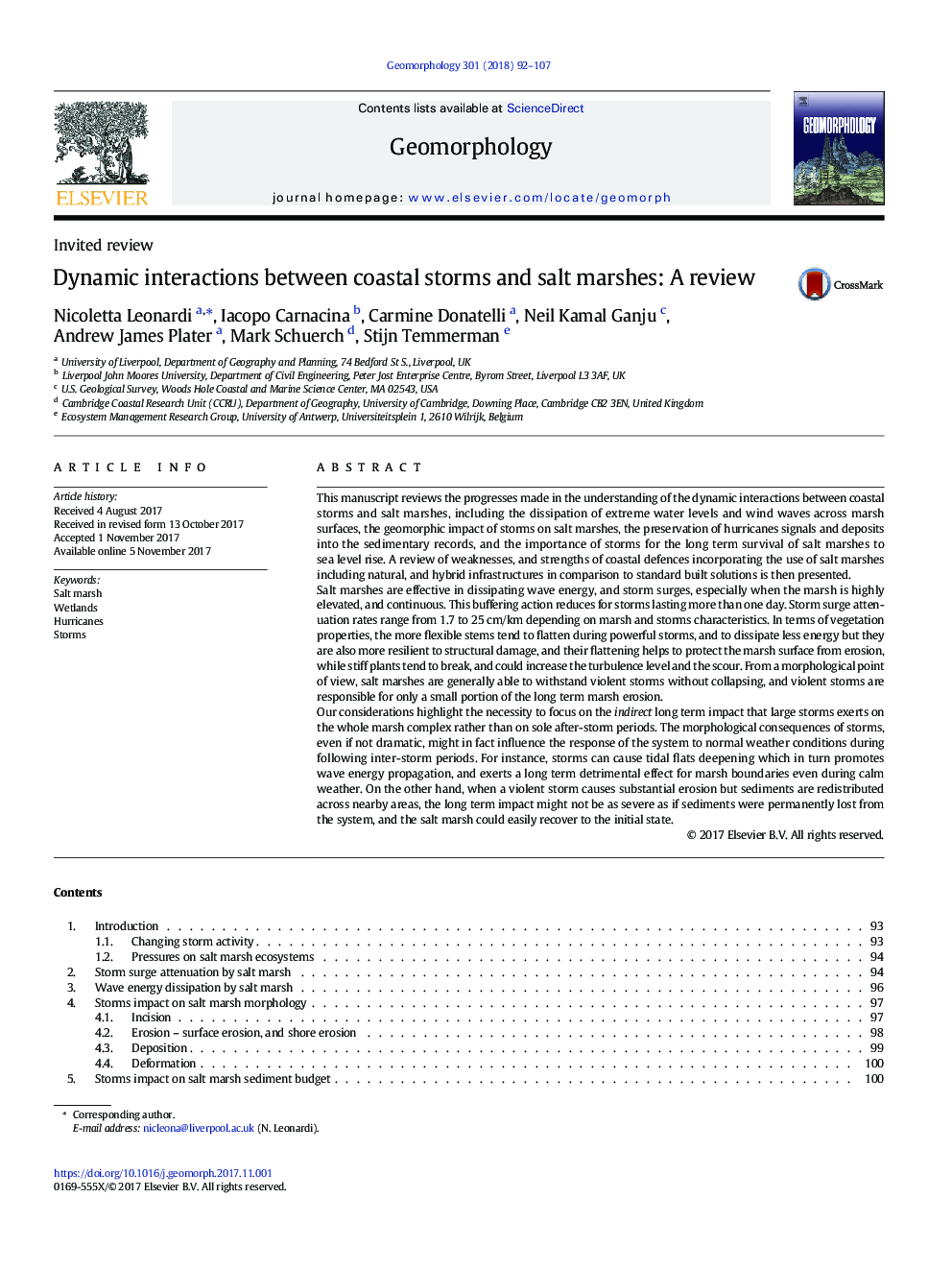| Article ID | Journal | Published Year | Pages | File Type |
|---|---|---|---|---|
| 8908281 | Geomorphology | 2018 | 16 Pages |
Abstract
Our considerations highlight the necessity to focus on the indirect long term impact that large storms exerts on the whole marsh complex rather than on sole after-storm periods. The morphological consequences of storms, even if not dramatic, might in fact influence the response of the system to normal weather conditions during following inter-storm periods. For instance, storms can cause tidal flats deepening which in turn promotes wave energy propagation, and exerts a long term detrimental effect for marsh boundaries even during calm weather. On the other hand, when a violent storm causes substantial erosion but sediments are redistributed across nearby areas, the long term impact might not be as severe as if sediments were permanently lost from the system, and the salt marsh could easily recover to the initial state.
Keywords
Related Topics
Physical Sciences and Engineering
Earth and Planetary Sciences
Earth-Surface Processes
Authors
Nicoletta Leonardi, Iacopo Carnacina, Carmine Donatelli, Neil Kamal Ganju, Andrew James Plater, Mark Schuerch, Stijn Temmerman,
